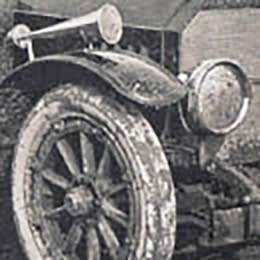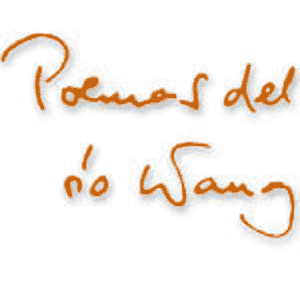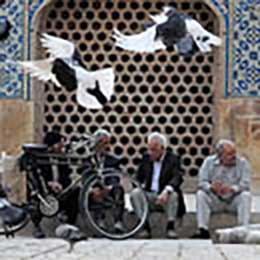
| This post is published simultaneously here and on the Great War blog, the leading Hungarian military history blog about WWI. |
A significant slice of the German military children’s book market was from the outset monopolized by the publisher Joseph Scholz in Mainz, whose books were illustrated by the highly popular Arpad Schmidhammer (1857-1921). Despite this typically Hungarian name, Arpad Emil Schmidhammer was born in a German family in the Bohemian Ore Mountains, in St. Joachimsthal, the native town of the Joachimsthaler, that is, the taler/dollar (today Jáchymov). He studied drawing in Graz and Vienna. He was one of the illustrators of the Munich-based magazine Jugend (1896-1940) from its founding, the publication that gave its name to the German Art Nouveau, the Jugendstil. He also made political caricatures for many other newspapers, and illustrated a large number of fairy tale books. His drawings published in the 1914/26 edition of Jugend, shortly before the outbreak of WWI, makes him seem like a pacifist:
However, this critical voice completely disappears from the series of patriotic children’s books launched some months later. In these books, the war has nothing to do with this kind of horror. It is merely an idyllic child’s play, in which our boys teach a lesson to the misbehaving children who annoy them, and the incident comes to a happy ending with laughter.
The following five children’s books have been digitized and published by the Berlin Staatsbibliothek in the series “Europeana Collections 1914-1918” coordinated by them. The purpose of this project, embracing ten national libraries all over Europe, is to digitize and make available 400,000 documents connected with WWI by 2014, the centennial of the outbreak of the First World War. The hitherto digitized material of the Staatsbibliothek can be viewed here. Partial results will be presented at a conference in 30 and 31 January in the Staatsbibliothek, about which we will report here.

The first item of the series, Lieb Vaterland, magst ruhig sein! Ein Kriegsbilderbuch mit Knittelversen (Dear homeland, be quiet! War picture-book with couplets) was published simultaneously with the outbreak of the war. This book explains with a clear and simple metaphor the reason for the outbreak of the war and its expected outcome. The German Michl and the Austrian Seppl attend to their garden together – Königgrätz was just a misunderstanding! – but the naughty Serbian Lausevitsch, that is, Lousesson, trusting in the support of his Russian brother Nikolaus, keeps poking Seppl over the fence. While the angry Seppl gives them their gruel, Michl gets into trouble with Jacques and his British brother sticking out their tongues at them from the other side of the garden. And if this were not enough, the American John is already crossing the water with his Japanese monkey, to uproot the flowers of the garden. However, Michl and Seppl give everyone their due. At the end all the scoundrels are locked up in a cage, and a beautiful new fence is erected around the garden. Actually, this last metaphor does reflect the historical reality, with the difference being that the beautiful new fence was eventually erected by the scoundrels around the garden.








It is surprising, how important it was for the Scholz publisher to keep the children up to date about the changes of the war. The picture book Die Geschichte vom General Hindenburg (The story of General Hindenburg) illustrates in a comprehensible way how General Paul of Hindenburg, having retired before WWI and reactivated immediately after its outbreak, faced the Russian army’s attack on Prussia, how he trapped them twice in the Masurian marshes, and how he, after the winter campaign, together with his Austrian and Hungarian friends, chased them out of Galicia and Russian Poland. The trick is as simple as a boot-jack: take two kid soldiers, wait until the Russian children march out upon the plank laid betweeen the Masurian marshes, and then let the German kids overturn the plank. In winter, the snowball also makes for excellent ammunition, which the Russians seem completely unaccustomed to. Fun, laughter, triumph.














An up-to-date commentary of the war events is also provided by the next book, Maledetto Katzelmacker. Eine wunderschöne Räubergeschichte (The villain Katzelmacker. A beautiful robber novel). Its figures are not children, but it still presents the war in the form of a hilarious tale. The story, narrated in the manner of traditional picture-showers and “sung on guitar”, as the inner frontispiece suggests, illustrates with a long series of negative national stereotypes how Italy betrayed the Central Powers in May 1915. The personification of Italy, called here Katzelmacker, Spoonmaker, a traditional Southern German nickname for Italian traveling merchants, originally earns his living as a murderous robber in Abruzzo. His figure recalls both the most popular German robber novel, Rinaldo Rinaldini, and Rumcajs, that is Rübezahl, the legendary shaggy little bandit of Schmidhammer’s native Ore Mountains. When this trade becomes risky, he still continues as an assassin, but then he brings himself, posing as a chestnut vendor and knife-grinder, to join the Dreibund run by our old acquaintances, Michl and Seppl. In the meantime he yearns for Seppl’s beautiful parrot named Trento-Trieste. Then one night three burglars come: Niko, John and Jacques. They try in vain to break into the house, since – as it can be read next to the door – it is effectively ensured against burglary by the Skoda and Krupp steelworks, the producers of WWI’s Austrian cannons. Finally they bribe Katzelmacker to stand on their shoulders, like in the Bremen Town Musicians, and to climb into the house through the high balcony, probably representing the high chains of the Alps. However, the hosts are on guard. Katzelmacker is taken by the ears by Seppl, and Niko is kicked off from under the others by Michl. Finally the brigand gets put where he belongs: on the gallows, to feed the crows.





















A timely overview of the European theater of war is offered also by Hurra! Ein Kriegs-Bilderbuch (Stuttgart: Loewes Verlag, 1915), which was drawn by Herbert Rikli instead of Schmidhammer, but it was one of the most popular pieces of this genre. To the little Willi, who keeps on watching the war events and yearns for participating in them, “the little Jesus makes great fun / by bringing for Christmas his machine gun”. In ecstasy, inspired by the books on animals he has seen at bedtime, in his dream he traverses the entire European battlefield, everywhere conquering the enemy riding on strange animals. He stands guard on the Rhine, on French soil he shoots the zouaves from the tree appearing as ripe pears, and also wins the giant (!) Ghurka who “seems to have come straight out of Hagenbeck’s animal zoo”. He beats back the British attack on grasshopper-back, he chases away the Russian rat-cavalry from the Masurian lakes, and later also from Galicia, where he joins forces with the Austrian Franzl, who shortly before that triumphed over the Serbians. He destroys the British fleet with a submarine – this episode was also illustrated by Schmidhammer in another book – and the Big Ben from a Zeppelin. Finally he also tries the trenches at the western front, where he is injuried, but he quickly recovers in the excellent German hospital for the ultimate triumph.
























The latest piece of the series digitized so far, published by Scholz and illustrated by Schmidhammer, Hans und Pierre. Eine lustige Schützengrabengeschichte (Hans and Pierre. An amusing trench story, 1916), already gives a true and patriotic image on the life of the western front, prepared for a position war. Both the German and the French boys take their places in the trenches, each in his own way: Hans quite disciplined, and Pierre staggering drunk, roaring about the revanche. The morning passes quickly in shooting, but when lunch time comes, the smell of home-cooked food being heated up by Hans drives the starving Pierre mad. He digs his way with a great effort between the two trenches, at the end of which Hans is waiting for him with a noose.















All’s well that ends well. Hans receives the Iron Cross, and Pierre can finally eat enough hot soup in the Döberitz prison camp, and he even gets a sausage to the soldier’s bread. This image already leads over to another type of visual propaganda: to the leaflets and postcards illustrating the good treatment of prisoners, in part to induce the enemy to surrender, and in part to reinforce the country’s positive self-image. But this will be the topic of a next post.



























































































Add comment